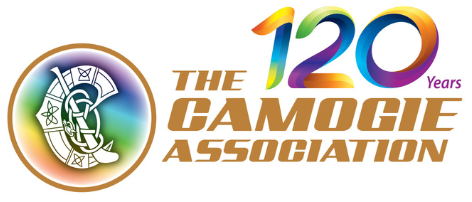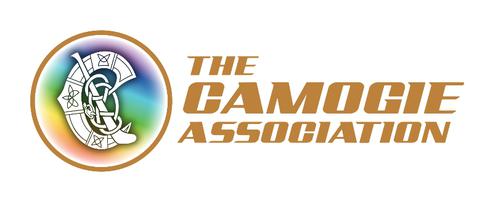What are Go Games?
GAA Go Games are small-sided games with modified rules in both Hurling (Go Hurling) and Camogie ( Go camogie) They form a central element of GAA and Camogie policy on games for children up to and including the Under-12 age grade.
The Go Games Model is defined by the following criteria:
ò There is full participation for all players
ò Games are organised in a non competitive way i.e. results are not recorded
ò Games are small-sided
ò Playing rules are modified to suit the developmental stages of the children
ò Playing area is modified
ò Playing equipment is modified
NB: Modifications and playing rules are at the discretion of each county.
At Under-12 level Mini-League Competitions are organised to provide and support a gradual exposure to the challenges of competitively organised games programmes.
These mini-league competitions can be introduced in parallel to Go Games.
The mini-league system is a competitive games programme built on the philosophy of Go Games, that is, a) it is small-sided, and b) provision must be made for all players to get meaningful playing time.
When will this policy be implemented?
Many counties have already adopted this approach after it was endorsed at special congress 2010. The policy will become rule in 2011 whereby all Under 12 games must follow this format.
What is the philosophy of Go Games?
The underlying philosophy where Go Games are concerned is one of full participation and fair play where each player gets to play the entire game (no subs where practical) and plays in a number of different playing positions during the course of each game.
The games are small sided and the emphasis is on participation rather than the result.
Go Games are not only about Fair Play in the sense that all participants should get the opportunity to participate fully in the games.
What are the advantages of Go Games?
There are a numerous advantages to this approach but the most obvious are:
ò Games are small-sided and all participants get to play for the entire game
ò Games are played in a fun environment with emphasis on improving skills
ò Children are not subject to the win at all costs approach.
Is there any research to support this approach?
Research conducted at DCU, under the guidance of Prof Niall Moyna was crucial in the development of the Go Games. By tracking the same 7 players in a 15 a-side and 7-a-side game (each of 30 minute duration) the data indicated the following benefits of the small sided game;
ò Players worked harder therefore increasing fitness levels
ò Players had more contact with the ball leading to increased opportunities to score, make decisions, develop skills
ò The children also reported a greater level of enjoyment and had higher levels of perceived competence (self esteem)
Go Games are also in line with the Primary School PE curriculum and have recently been endorsed by Cumann na mBunscol at their national AGM. The maximum participation of all children in sporting activities is at the heart of the primary school curriculum. Participation must never be sacrificed for competition, the success of the few must not be promoted over the opportunity for all children to take part, enjoy and develop to the best of their ability.””
How will existing competitions at Under 12 be affected by this rule ?
Many counties have already adopted a successful child centred approach but some counties may need to re-format competitions slightly. Mini leagues will be organised which act as an introduction to competition. These leagues would be small sided and would ensure that there is provision for participation for all players. Where possible clubs would field multiple teams to facilitate all players playing to avoid children sitting on sidelines. It is important for clubs to be aware that all competitions or tournaments must be sanctioned by county board for insurance purposes.
What is the aim of this policy?
The ultimate aim is to ensure a quality introduction to Gaelic games for all children and to build a mass of players to progress and continue to play with their club. The provision of formal competition for children is a relatively recent development.
However, with the passage of time, these competitions have in some cases become more serious and naturally when this occurs a culture of ækeep the best and neglect the rest’ develops. While those in charge may be well intentioned, there is no justification for placing adult-type demands on young children e.g. where winning is the over-riding concern, where they play in 15-a-side games, on over sized pitches, and have minimal involvement in the game.
This has led to a situation where many players who – for a variety of reasons – mature at a slower rate finish up dropping out of Gaelic games due to a lack of confidence in their own ability, a lack of playing time, a lack of fun and the absence of any real sense of achievement.
In recent years, there has been a greater appreciation and increased recognition of the need to ensure that a child-centred approach is adopted where the promotion and development of Gaelic games is concerned. In other words, it should be a case of children first, winning second. This in no way rules out competition, but contextualises it, firstly through Go Games as the intrinsic motivation inherent to sport and secondly through mini-league competitions within a framework which ensures that all children get a fair opportunity to participate and provides greater opportunity for skill development and enjoyment
1. Playing numbers:
Under 8: A maximum of 7 v 7
Under 10: A maximum of 10 v 10
Under 12: A maximum of 11 v 11
These guidelines are the maximum number of children recommended per team. The smaller sided the games the better.
2. Zones:
Zones are suggested at Under 8 and Under 10 to avoid the crowding effect. If games are suitably small sided it may not be necessary for zones
3. Recommended Playing Time:
Under 8: 4 quarters of seven minutes
Under 10: four quarters of 10 minutes
Under 12: Four quarters of 12 minutes
Four quarters are suggested to allow an interchange of positions (allowing all players to experience different positions). Logistical issues sometimes necessitate playing 2 halves. Rule changes/position changes may take place within a half.
4. Suggested Playing Rules:
Under 8: No solo, Ground hurling, Zones
Under 10: Catch and Strike, No solo, Zones
Under 12: Rules modified to meet developmental needs
5. Suggested Field Size:
Under 8: 45M x 40M
Under 10: 65M x 40M
Under 12: 100M x 40M
“


















